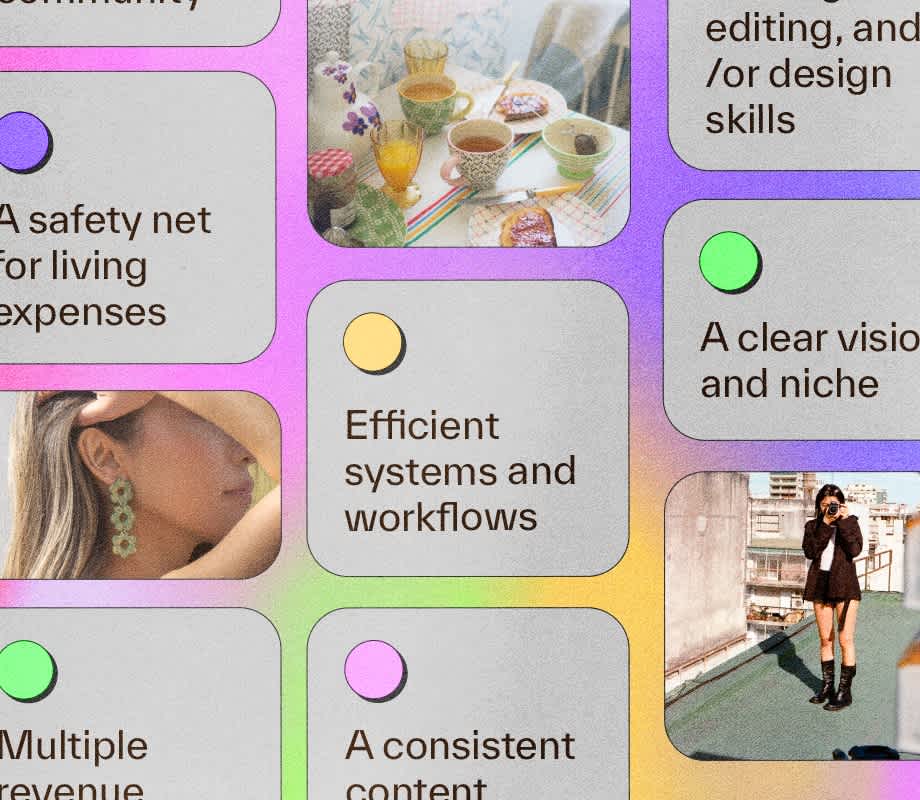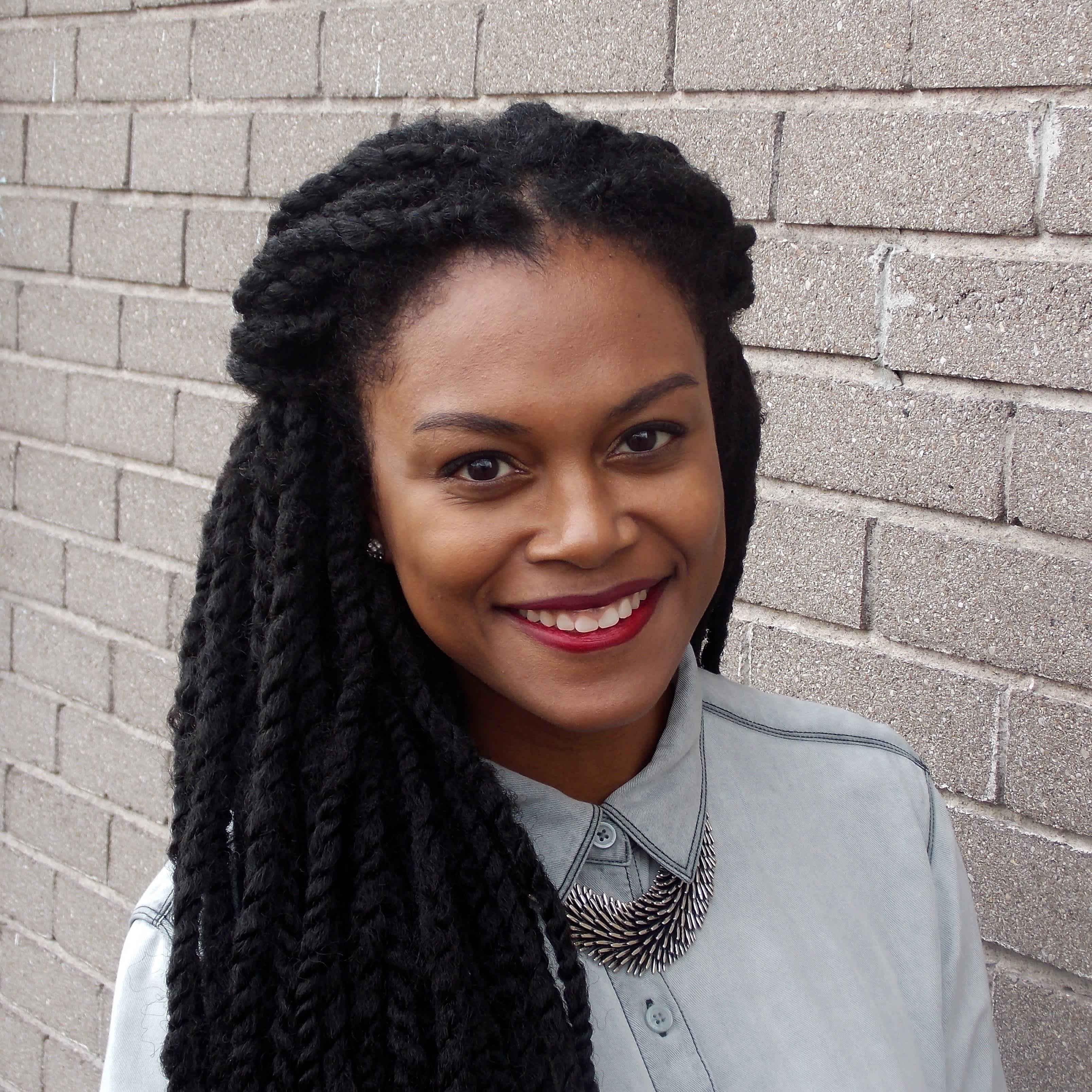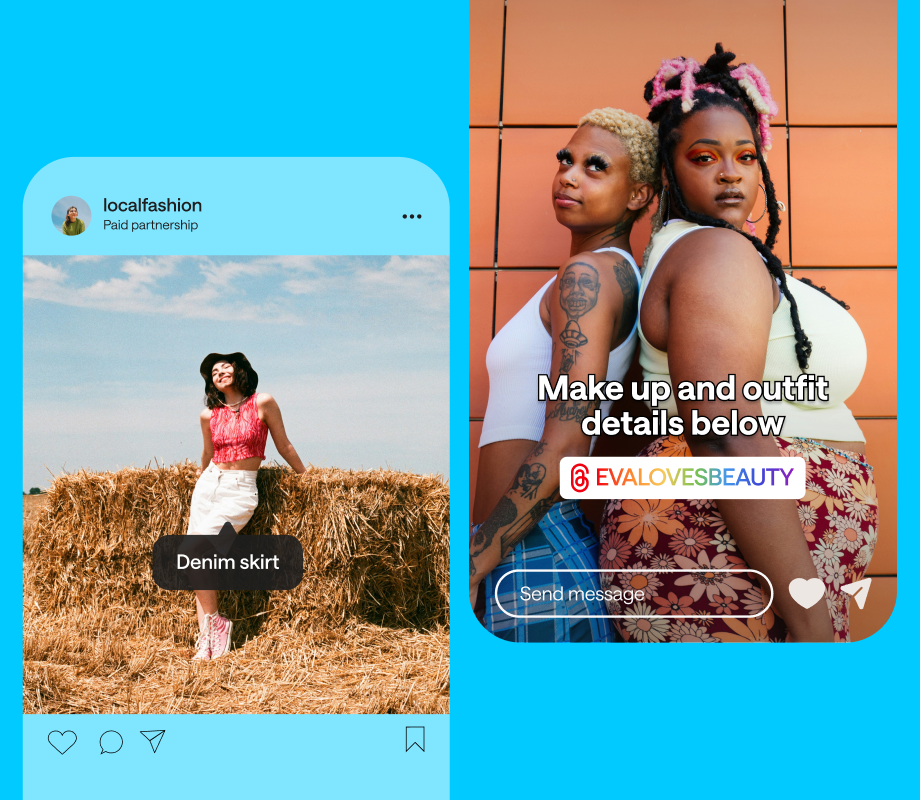Can you really quit your job to become a content creator? Spoiler alert: yes.
The creator economy is booming, and in 2022, many are either making the shift to (or considering) becoming a full-time content creator.
But it takes more than one viral post or nailing the latest TikTok trend.
We interviewed two creators to find out how they took the leap, the lessons they’ve learned, and how you can do it too. Hint: it won't happen overnight.
If video is more your style, check out our YouTube video outlining four steps to becoming a full-time content creator:
What Is a Content Creator?
A content creator is, by definition, anyone who creates digital content.
A professional content creator, however, is someone who is able to build an online community, monetize their skillset, or a mix of both.
And in 2022, the “creator economy” is seriously big business — it's worth over $100B (and counting).
Becoming a content creator isn't just about posting on social media. In 2022, content creators wear many hats, including:
Developing content calendars
Creating videos, graphics, or photos for their social accounts
Creating social content for brands (see: UGC creators)
Connecting with their community via Stories, Livestreams, or events
Collaborating with brands via sponsored posts or affiliate links
Launching courses, newsletters, podcasts, or products
Consulting for brands, small businesses, or aspiring creators
Guest writing blog posts or articles
And with more social media platforms investing in creator tools and features, the content creation space is just getting started.
What’s the Difference Between a Content Creator and an Influencer?
You’ve likely heard the term content creator and influencer used interchangeably, and while they are similar, they’re not exactly twins.
As mentioned earlier, a content creator is anyone who creates digital content. On the other hand, an influencer is someone — as the title suggests — who has influence.
Essentially, influencers are social media personalities who share their lives online and influence their hyper-engaged audience to purchase the products or services they use.
Think: Skincare fairy godmother, Charlotte Palermino:
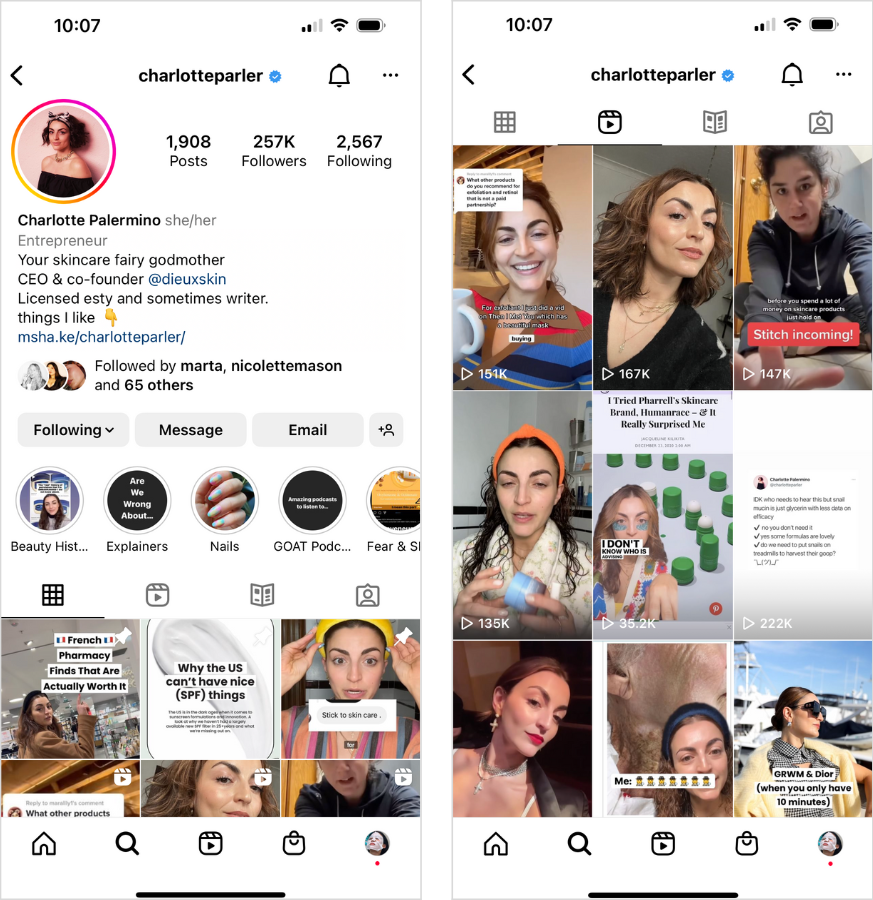
Palermino leverages her loyal community of over 250K strong to seamlessly promote certain brands via Reels, Stories, and feed posts.
So while influencers are still technically content creators (and content creators can also do sponsored posts), the former yields great influence on their audience's purchasing power — and that's what makes them different.
Did you know: Later is trusted by millions of creators, brands, and social media managers to drive traffic, and manage their social content. Create a creator account, today:
How Much Do Content Creators Make?
The short answer: it depends.
Since the creator industry is still fairly new, there’s unfortunately no universal one-size-fits-all pricing rule.
For example, if you were to ask a content creator how much money they charge brands for sponsored posts, you may be surprised to see a scope of answers across the board:
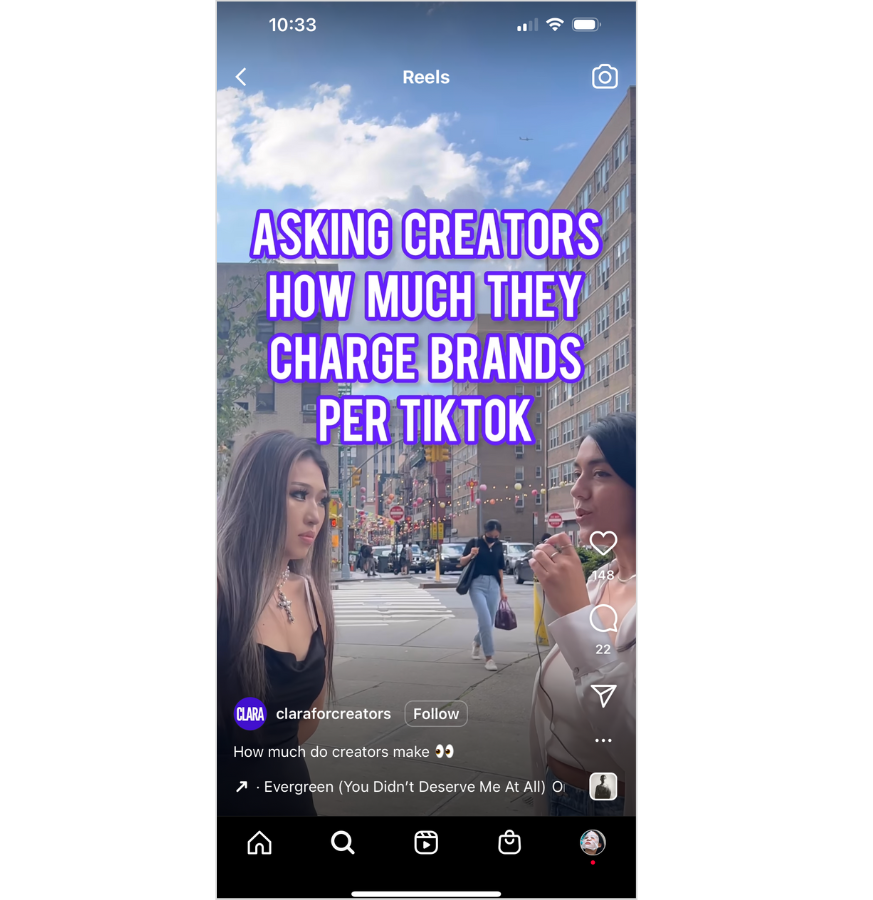
Image courtesy: @claraforcreatives
That said, many digital marketers adhere to a $250-$450 per 10K followers rule, as a starting point.
Though, rates should also consider:
A creator’s reach and engagement. The higher the engagement rate, the more they'll charge.
The type of content included in the scope of work. An Instagram Reel or TikTok may cost more than a standard feed post.
The amount of time and resources required to create content. This includes setting up shots, possible outfit changes, script writing, etc.
Length of the campaign. How often is a creator expected to post about a product or service?
Usage rights, such as repurposing content for a brand’s site, ads, or other platforms.
While some of today's biggest content creators are charging major bucks to create posts for brands, that doesn't necessarily mean creators with smaller followings can't do the same.
Plus, when you consider creators who have multiple streams of income like online courses, public speaking opportunities, or a small business — the sky's the limit.
TIP: Check out brands like Clara for Creators and FYPM who advocate for more pay transparency in the industry and help creators set their rates.
How to Become a Content Creator in 8 Steps
We spoke with Tomi Obebe and Taylor Loren, two creators who specialize in different niches, to find out exactly how to become a full-time content creator and what you need to make it happen.
Here's what they said:
A Clear Vision and Niche
SMART Social Media Goals
An Engaged Community
Efficient Systems and Workflow
Multiple Streams of Revenue
A Safety Net for Expenses
Writing, Editing, and/or Design Skills
An Organized and Consistent Content Calendar
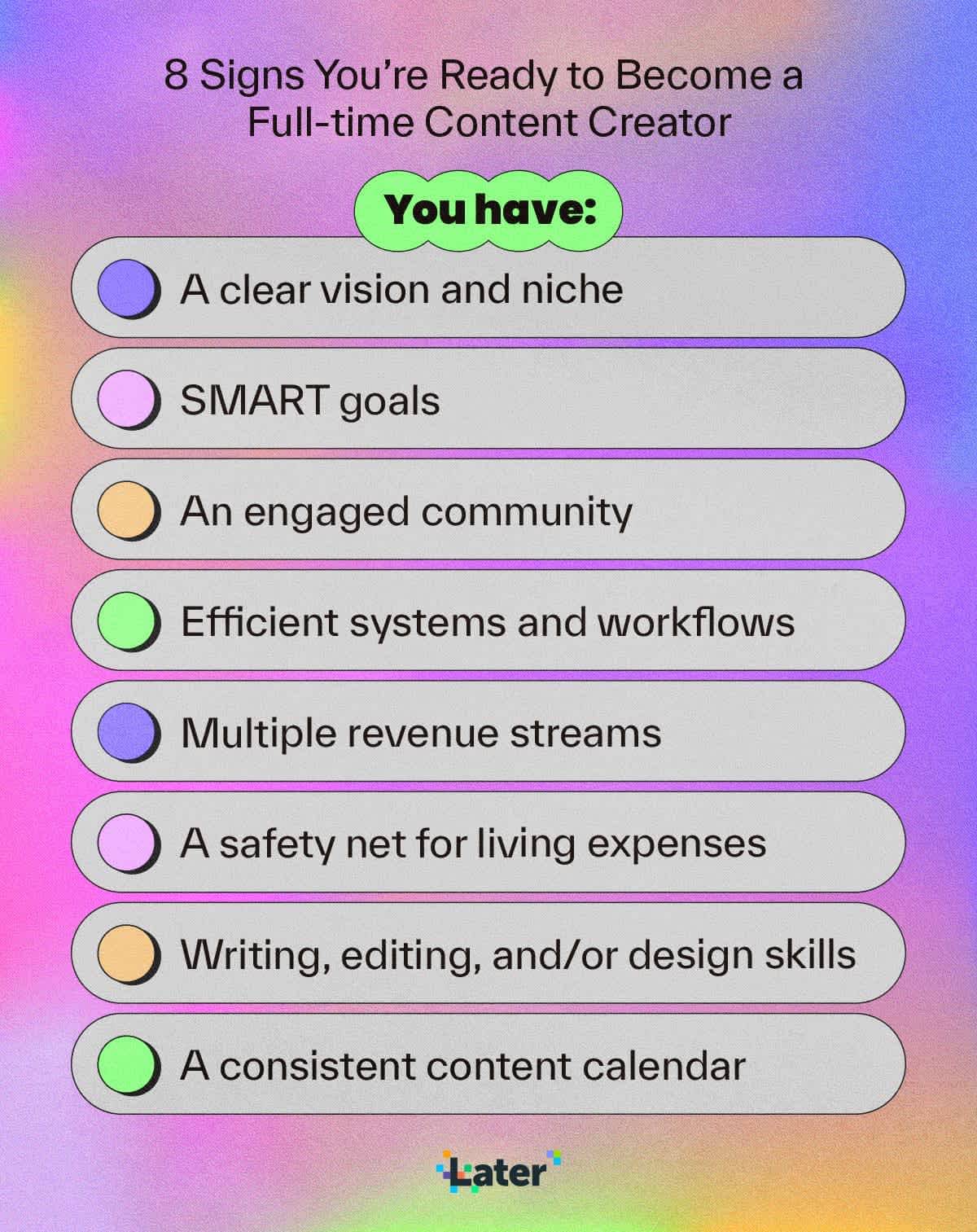
Step #1: You Have a Clear Vision and Niche
If you have a clear vision and niche, it’ll help you create relevant content, attract the right followers, and grow an engaged community.
But more importantly, it gives you something to come back to whenever you have a mental roadblock.
“Remember why you’re doing this in the first place,” advises Tomi.
For Tomi, she recognized there was a disproportionate number of Black-women bloggers in the lifestyle space.
Tomi’s vision is all about advocating for representation in the industry, inspiring women of color, and helping them “get the same opportunities that I’ve been afforded.”
As a result, her blog, GoodTomiCha, touches on brand collaboration tips and rate transparency, along with her other content pillars such as fashion and travel.
When brainstorming your vision, ask yourself: What are my passions and skills? What am I knowledgeable about? If I wasn’t getting paid, would I still enjoy creating this content?
FYI: Later makes creators' lives easier with tools including a media kit, a customized Linkin.bio, and your personal best time to post. Create an account and get started:
Step #3: You’ve Built An Engaged Community – Regardless of Its Size!
Here’s a little secret: you don’t need millions of followers to become a full-time content creator.
Tomi and Taylor each have less than 40K followers on Instagram.
What matters most is that they’ve cultivated engaged communities who interact with their posts, click-through their links, and support their content that doesn’t live on social – like their blogs or courses.

So, how do you build an engaged digital community?
Show up on camera and interact with your followers, whether it’s via stories content or livestreams.
Create educational or entertaining content such as carousel posts, blogs, long form videos, or meme content that shows off your personality.
Respond to comments and DMs! Social media is a two-way street, and listening to what your community has to say can help inform your content strategy.
TIP: Post consistently by planning and scheduling your content in advance with Later. Create a creator account, today!
Step #4: You Have Efficient Systems and Workflows
Streamlining your workflow is a must when jumping into content creation full-time.
Tomi says content batching is the way to go: “It makes it so much easier to prep in advance. You need to have a game plan.”
But setting up workflows and systems isn’t just for the content creation side of your business.
Believe it or not, I sleep 8 hours a day.
— Roberto Blake 🇺🇸🇵🇦🗽Creative Entrepreneur (@robertoblake) January 11, 2022
I just happen to do more in 10 hours than some ppl do in 40 because I use systems, tools and very efficient workflows.
I also invested most of my money in the tools of my trade that make me fast or make my life easier to manage.
“One of the biggest lessons I’ve learned is to set up your finances ASAP. Get a separate business bank account, consult with an accountant about how much you should put aside for taxes, and know what you can claim for expenses,” advises Taylor.
And as you grow, you’ll also need to start thinking about building a team or outsourcing work – you can’t do everything solo!
“Just because you have your own business, does not mean you have to literally do everything by yourself,” shares Tomi.
Step #5: You Have Multiple Streams of Revenue
Content creators have multiple skills in their toolkit – but knowing how to monetize those skills is where the money resides.
Having multiple revenue streams also means you’re not putting all your eggs in one basket.
Here’s how Tomi monetized her content in 2021:
70% brand partnerships
20% affiliate sales
10% freelance content creation and consulting
While Taylor took a slightly different approach:
50% courses and workshops
30% consulting
20% brand partnerships
While there’s no one-size-fits all approach, take note of the skills you have and the type of content your audience would find valuable when taking the leap into becoming a full-time content creator.
To learn more about how content creators make money, check out this post: 8 Ways to Make Money as a Content Creator
Step #6: You Have a Safety Net for Living Expenses
Both Tomi and Taylor stress the importance of having savings set aside.
“Make sure you have at least six months worth of savings, and budget what your expenses and costs will be,” says Tomi.
And Taylor recommends saving even more: “I had saved up six months of living expenses before I quit my job – but that was living on a bare bones budget.
In reality, without making adjustments to my lifestyle, it was actually three months. If I were to do it again, I’d stick to my budget or wait to quit my full-time job until I had more in the bank.”
Step #7: You Have Writing, Editing, and/or Design Skills
This goes without saying: the ability to write, edit, or design is a highly valuable skill in the world of content creation.
This can be for longform content like YouTube videos or newsletters, or short-form content like TikTok videos or Instagram captions.
You don’t need to do them all, and you don’t need to be an expert, but it helps to have a reference point for the quality of your content.
And even more importantly: keep an eye on upcoming trends and jump on those that are relevant to your brand.
Step #8: Your Content Calendar is Organized and Consistent
The last sign you're ready to be a full-time content creator?
Your content calendar is organised and consistent — making it easy to grow on social, tell your story, and effectively promote your campaigns or launches.
And with Later's creator tools, you can:
Plan your social content from one central place
Schedule your posts on the go
Drive clicks with Linkin.bio
Get discovered by brands for new partnerships
Analyze your content to see how it performs
Plus, with the Visual Planner feature, you can see exactly what your Instagram grid will look like in advance.
If you’re not feeling its current look, you can rearrange your posts to strike the best balance – in just a few seconds:
Why does this matter? Your Instagram grid is similar to a website homepage – it tells visitors who you are and what they can expect from you.
While it doesn’t need to be “picture-perfect,” it helps to make a strong first impression with a feed that is somewhat cohesive and shows what you're about:
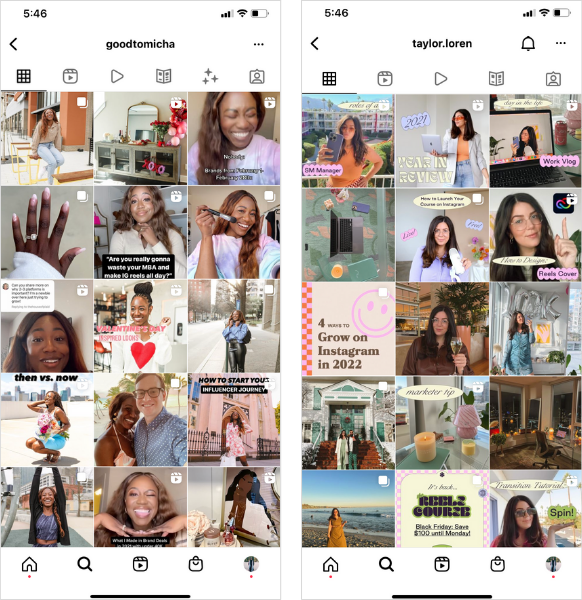
Remember: becoming a full-time content creator won’t happen overnight. And it takes more work than a one-off viral post.
But with a solid vision and plan in place, along with an engaged community and multiple streams of revenue, you’ll be well on your way.
Ready to create a more efficient workflow? With Later's creator tools, you can schedule your social media content, find your best time to post, and more. Start your free trial:
